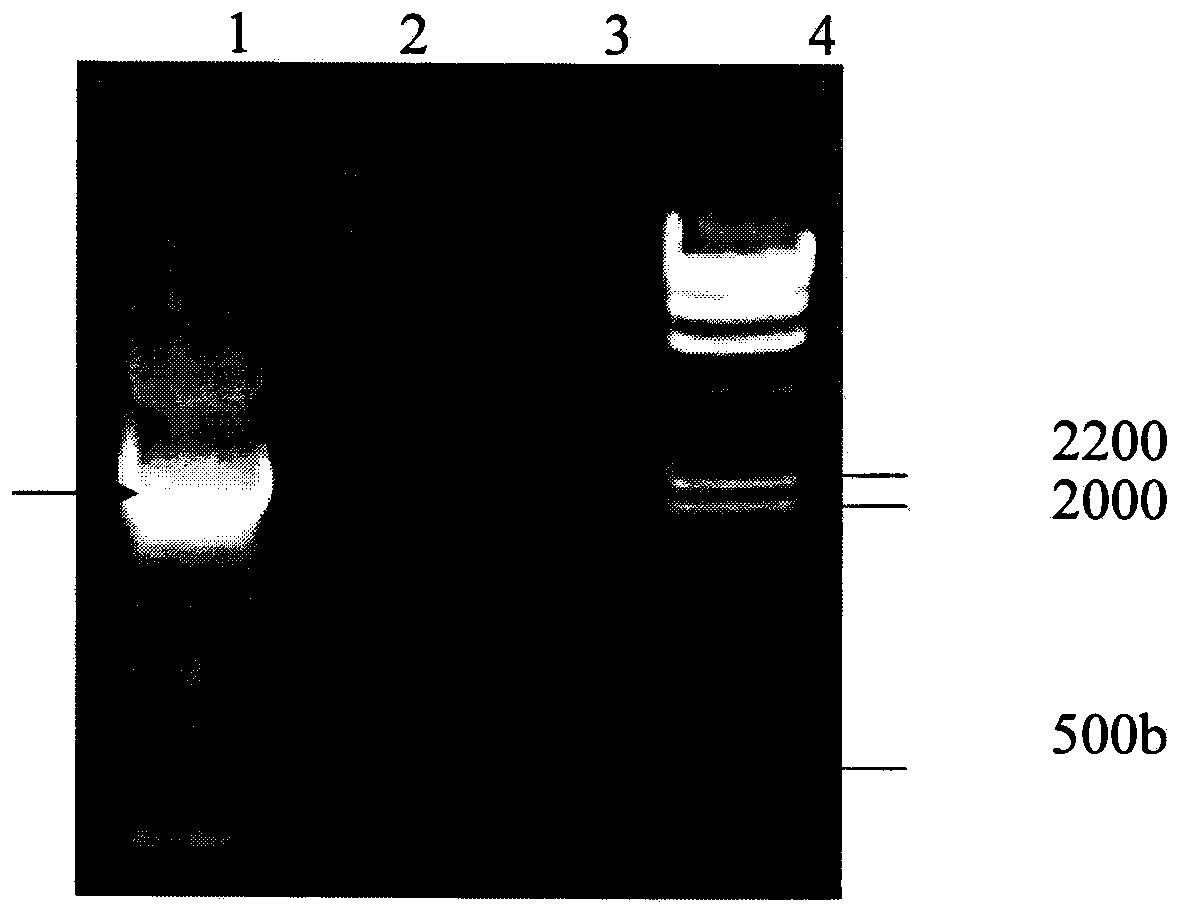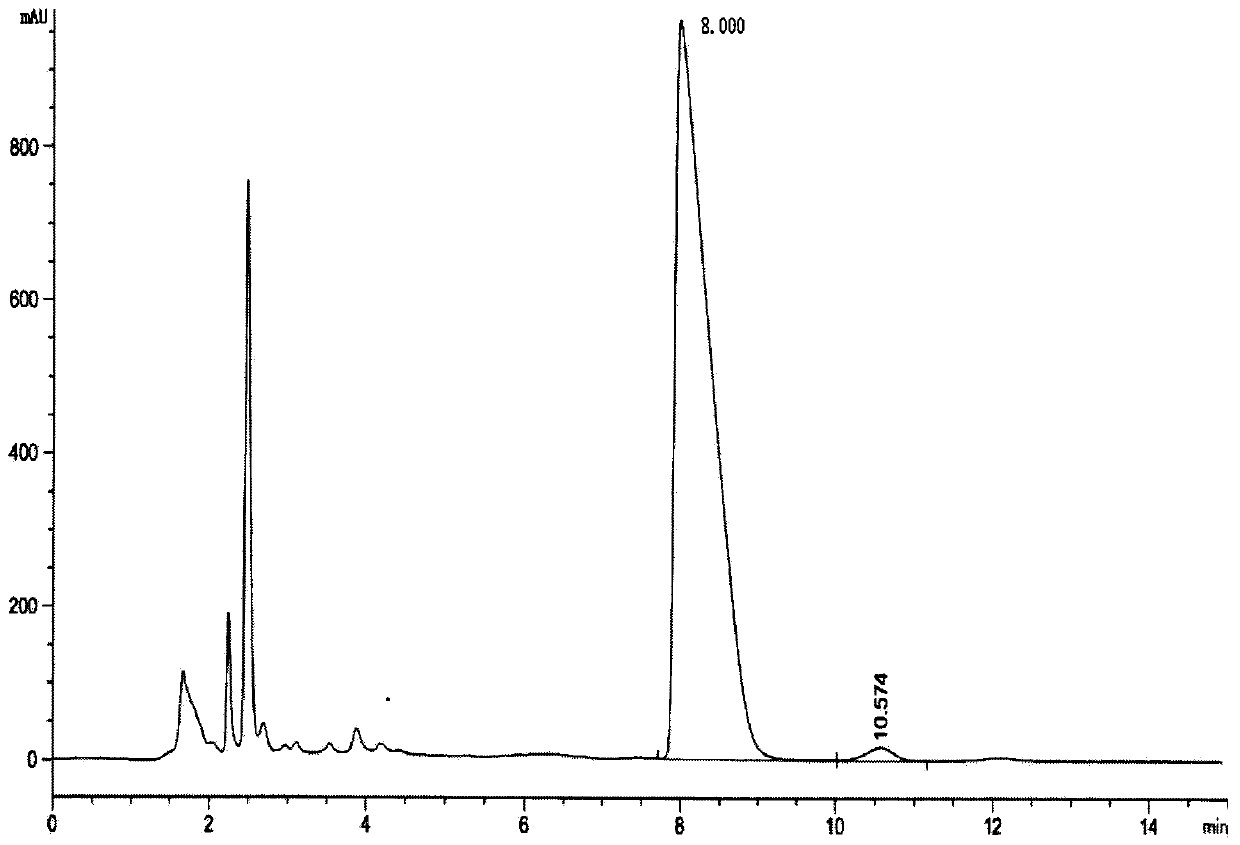Acylase for producing 7-ACA (Aminocephalosporanic acid) by splitting CPC (Cephalosporin C) by utilizing a one-step method and polynucleotide encoding same
A technology of acylase and acylase activity, applied in the field of biochemical pharmaceuticals, can solve the problems of low substrate specificity, poor substrate tolerance, low conversion efficiency, etc.
- Summary
- Abstract
- Description
- Claims
- Application Information
AI Technical Summary
Problems solved by technology
Method used
Image
Examples
Embodiment 1
[0054] Example 1. Construction of error-prone PCR and product expression plasmids for the starting sequence
[0055] 1.1 Perform error-prone PCR on the starting sequence ecs gene
[0056] ECS stands for CPC Acylase. Wherein, the starting sequence is obtained by connecting segmented PCR products, and its gene sequence is shown in Figure 8 pyg232. When using DNA polymerase to amplify the target gene, by adjusting the reaction conditions, increasing the concentration of magnesium ions or adding manganese ions, using low-fidelity DNA polymerase to change the mutation frequency during the amplification process, so as to increase the mutation frequency at a certain frequency. Randomly introduce mutations into the target gene to obtain random mutants of protein molecules. The PCR reaction system used is as follows:
[0057]
[0058] The sequences of primers P1 and P2 are:
[0059] P 1 : 5'-GCTT GTC GACTCTAGATCAGTGGTG-3' (the underlined part is the Sal I restriction site); ...
Embodiment 2
[0064] Example 2. Primary screening of transformants
[0065] 2.1 Transformant cell culture and protein expression
[0066] Select the engineered bacterium transfer test tube of construction and cultivate overnight, then transfer to the shaking flask that 250ml LB liquid medium is housed with the inoculum of 2% (V / V), and the concentration of kanamycin in the LB medium is 10~50 μ g / ml, cultured at 37°C, 220 rpm for 3 hours;
[0067] Then add IPTG to make the final concentration of IPTG in the medium reach 0.6 mmol, 25°C, 220 rpm, and culture for another 16 hours;
[0068] Centrifuge the bacterial cells at a speed of 8000 rpm in a low-temperature centrifuge.
[0069] 2.2 Primary screening of transformants
[0070] Suspend the collected bacteria with 3ml of 0.1mmol Tris-HCl, take 1ml of concentrated cells and 0.1mg of CPC in a water bath at 25°C, 28°C, 37°C, pH9.6 and pH8.0 respectively for 1h, 13200r / min Centrifuge for 5 minutes to take the supernatant, and measure the abs...
Embodiment 3
[0071] Example 3. Re-screening of highly active transformants
[0072] 3.1 Recultivate the 63 highly active transformants obtained from the primary screening
[0073] 1) 250ml induced expression culture (the induced expression culture obtained in the embodiment 2 step 2.1), centrifuged (8000rpm, 10min) to obtain the thalline, the thalline of the harvest was washed with 5ml P buffer solution (pH8.0, 100 times Diluted 1M disodium hydrogen phosphate and sodium dihydrogen phosphate mixture) suspension, ultrasonic crushing (crushing time 5s / interval time 5s, 500W, ultrasonic crushing 10min).
[0074] 2) Centrifugation and precipitation: after crushing, centrifuge at 4°C at a speed of 8000 rpm (Hitachi Himac CR21G refrigerated high-speed centrifuge, rotor is R12A), and precipitate cell debris.
[0075] 3) Separation and purification: the obtained supernatant (with his tag) was placed in a 100ml beaker, and separated and purified with a nickel column. The specific steps are:
[00...
PUM
 Login to View More
Login to View More Abstract
Description
Claims
Application Information
 Login to View More
Login to View More - R&D
- Intellectual Property
- Life Sciences
- Materials
- Tech Scout
- Unparalleled Data Quality
- Higher Quality Content
- 60% Fewer Hallucinations
Browse by: Latest US Patents, China's latest patents, Technical Efficacy Thesaurus, Application Domain, Technology Topic, Popular Technical Reports.
© 2025 PatSnap. All rights reserved.Legal|Privacy policy|Modern Slavery Act Transparency Statement|Sitemap|About US| Contact US: help@patsnap.com



